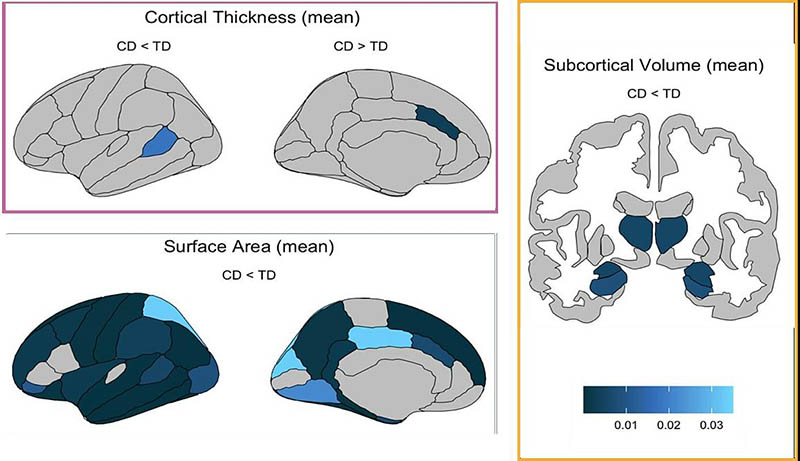Youth with conduct disorder show widespread differences in brain structure
NIH-funded study of conduct disorder identifies new brain areas associated with the disorder, offering future directions for research efforts and clinical practice
A neuroimaging study of young people who exhibit a persistent pattern of disruptive, aggressive, and antisocial behavior, known as conduct disorder, has revealed extensive changes in brain structure. The most pronounced difference was a smaller area of the brain’s outer layer, known as the cerebral cortex, which is critical for many aspects of behavior, cognition and emotion. The study, co-authored by researchers at the National Institutes of Health (NIH), is published in The Lancet Psychiatry.
“Conduct disorder has among the highest burden of any mental disorder in youth. However, it remains understudied and undertreated. Understanding brain differences associated with the disorder takes us one step closer to developing more effective approaches to diagnosis and treatment, with the ultimate aim of improving long-term outcomes for children and their families,” said co-author Daniel Pine, M.D., chief of the Section on Development and Affective Neuroscience in NIH’s National Institute of Mental Health. “Critical next steps are to follow children over time to determine if differences in brain structure seen in this study are a cause of conduct disorder or a long-term consequence of living with the disorder.”
A collaborative group of researchers examined standardized MRI data from youth ages 7 to 21 who had participated in 15 studies from around the world. Analyses compared the surface area and thickness of the cerebral cortex and the volume of deeper subcortical brain regions between 1,185 youth diagnosed with conduct disorder and 1,253 youth without the disorder. Additional analyses compared the cortical and subcortical brain measures between boys and girls, age of symptom onset (childhood vs. adolescence), and level of empathy and other prosocial traits (high vs. low).

Brain plots showing regions with significant group differences between youth with and without conduct disorder.
This page was last updated on Wednesday, July 17, 2024